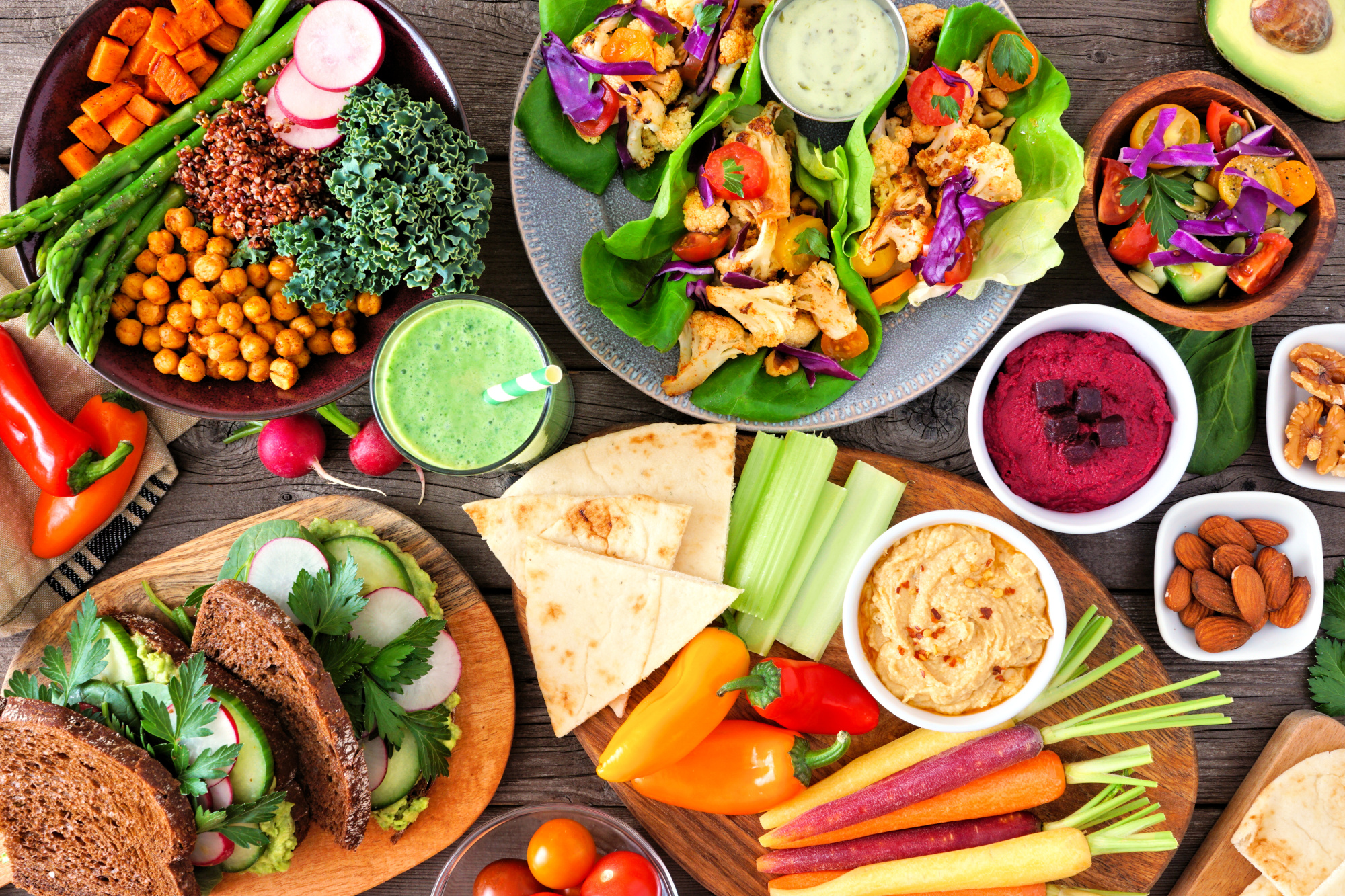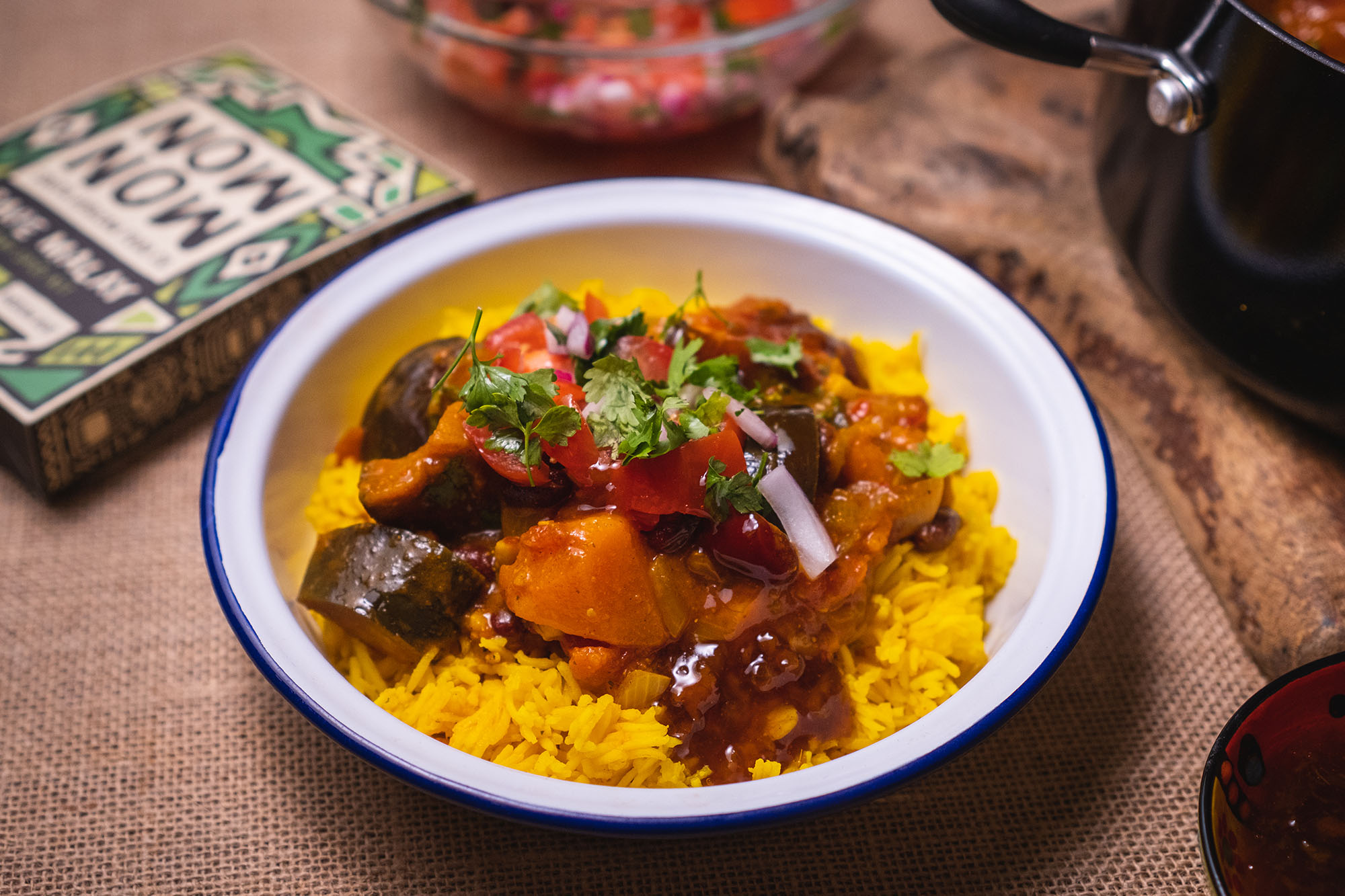Introduction
Consumers are increasingly turning towards convenience, as lives get busier and working hours lengthen. At the same time, the plant-based sector is seeing no sign of slowing down. To appeal to as many consumers as possible, many meal-kit brands, such as Berlin-based HelloFresh, have turned to the plant-based market, combining convenience with new ranges of plant-based recipe boxes. The past few years have also seen a huge increase in smaller recipe-kit and meal-box brands dedicated entirely to plant-based or vegetarian ingredients.
The growth of the sector in the past few years was largely driven by an upswing in 2020 during the COVID-19 pandemic.1 Although these levels of growth have proved to be unsustainable, the industry as a whole is still developing healthily – the global meal-kit market size is expected to expand at a Compound Annual Growth Rate (CAGR) of 17.4% from 2022 to 2030, reaching 64.3 billion USD.2
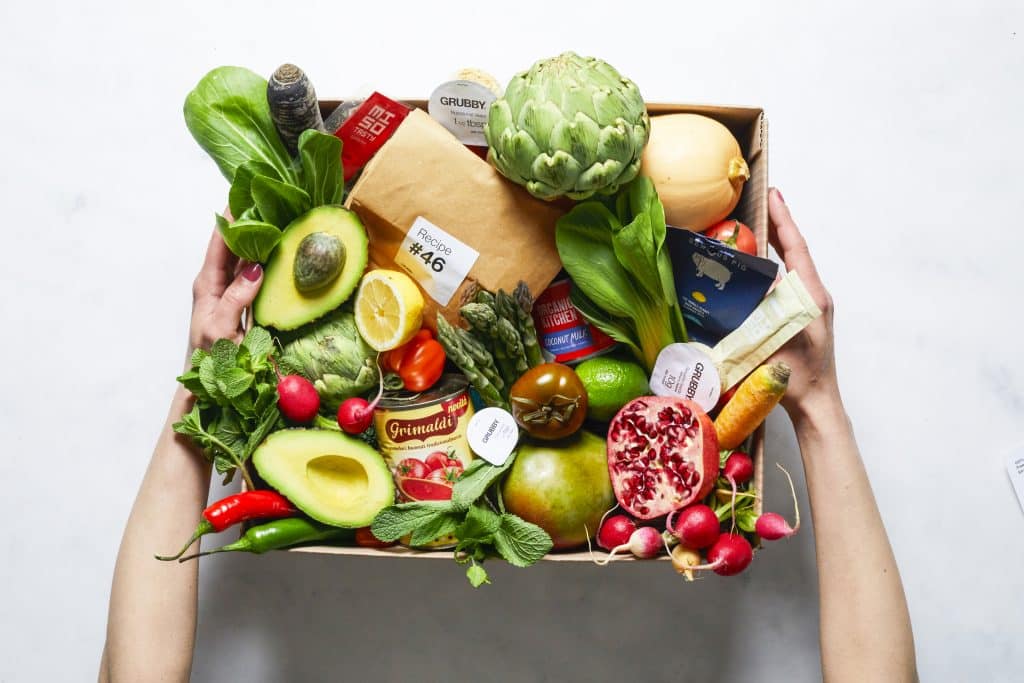
As the consumer desire for convenience expands, so do the market solutions – including meal-kit boxes and pre-prepared supermarket options.
If you are a meal-kit business, or are looking to expand your current plant-based product range to include recipe boxes or meal kits, look no further. We have compiled a list of five key insights to help your business attract and retain customers while promoting the plant-based eating cause:
- Target flexitarians with taste, health, and convenience.
- Consider diversifying your offerings.
- Promote convenience through personalisation.
- Partner with other brands.
- Be transparent about your limitations.
Read on to find out how to put these strategies into practice, and discover even more insight from key figures within the plant-based meal-kit industry.
Target flexitarians with taste, health, and convenience
In the meal-kit business, knowing your niche is essential. This means knowing which consumers you are trying to target, what you can offer them, and why they would want it. Generally, at ProVeg, we advocate targeting flexitarians when selling plant-based products – and this stands true for meal kits as well. This is because flexitarians account for 30% of European consumers, while vegetarians, pescetarians, and vegans represent only 9%. The number of flexitarians and reducetarians seems only to be increasing, meaning this total number could represent over half of consumers at some point soon.3
Meal-kit businesses largely agree. Leo Fisher, Head of Marketing at British plant-based meal-kit company Grubby, explains that almost 80% of their customers are flexitarians, underscoring the importance of targeting their preferences. “We want to target those people who might at first have a knee-jerk reaction to veganism,” he says. “We want to get our product in front of them so they realise that vegan cooking isn’t a sacrifice. We want to make them aware of the wider health and sustainability benefits.”

So what are flexitarians’ plant-based preferences? According to Smart Protein’s pan-European consumer report, produced in collaboration with ProVeg, the top priorities of flexitarian consumers when it comes to plant-based products are taste, health, freshness, lack of additives and preservatives (having a so-called ‘clean label’), and cost. Another report by the Good Food Institute highlights convenience as another top motivator for consumers looking to purchase plant-based products.4 In other words, consumers want plant-based alternatives to be readily and conveniently available.
Health-conscious consumers are, moreover, the key driving force behind the growth in the meal-kit subscription market in the US, with 39% of consumers choosing healthy eating as their main reason to purchase a meal-kit subscription.5Your company should be using this data to tap into these key interests – taste, health, and convenience.
The flexitarian audience is the way we feel we can grow and change people’s minds about eating plant-based.”
However, you don’t necessarily have to tap into every desire at once. Pastan is a plant-based pasta restaurant located in London with a focus on fresh and healthy ingredients. In April 2021, Pastan began to develop their e-commerce offerings, bringing a range of fresh pastas and sauces straight to the home of their customers throughout 2021. Part of this offering included plant-based, pasta-bundle meal kits, which included the raw ingredients and allowed the purchasers to assemble the Pastan dishes at home for small groups or larger parties.

They market their meal kits as the perfect intersection between convenience and indulgence, providing meal kits for people to cook at special events like dinner parties. In the words of Sophie Weir, Brand Manager of Pastan, “Find your niche, get really good at it, and use this as a solid foundation for expanding your range. Try not to over-saturate people with options.”
Considering flexitarian priorities and finding your brand’s niche within this is essential. However, you also need to account for the differences in flexitarian consumers, such as having a comprehensive understanding of the cultural make-up of your target demographic.
Benoo is a German meal-kit company that offers a selection of vegetarian meal-kit options to their Berlin-based customers using only locally produced ingredients. “We serve a very international city,” says Oriante Bertrand de la Brassinne, Co-founder of Benoo. “We try to have different chefs with varied origins to account for this, such as an Italian chef or an Indian chef.”
On top of this, Benoo have designed their business plan with cultural data in mind. “In Germany, people tend not to cook as much as those in France or Italy,” Bertrand de la Brassinne continues. “This is why we decided to only offer a once-a-week delivery service. We know that if we offered four recipes a week, for example, the demand would not be there.”
Aligning these sorts of cultural considerations with wider flexitarian preferences, as well as your brand’s own preferred product niche means you are set to provide your customers with tasty, convenient, and relevant plant-based offerings. For more information on how to design your products with convenience in mind to attract flexitarian consumers, click here to read our full article on the New Food Hub.
Consider diversifying your offerings
In a zeitgeist characterised by an increased cost of living, desire for convenience and market competition, your brand needs to stand out by offering consumers something they can’t get anywhere else. Wherever you can, consider diversifying your offerings.
Some examples of diversification trends to consider include:
Offering products for different meal times and eating occasions
The current meal-kit market is focused almost exclusively on dinner-time offerings. In fact, the slogan of the market’s biggest player – HelloFresh – is ‘Dinner is Solved’. However, many of the companies we spoke to highlighted a forthcoming trend in the sector: the diversification of mealtimes and eating occasions.
Expanding into different meal times and occasions to provide consumers with the widest range of plant-based products is no doubt a question of scale and budget. However, even on a smaller budget, it is worth considering how to provide your customers with seasonal specials, such as celebratory Christmas- or Eid-themed meal kits.

Consider all the different kinds of eating and cooking – perhaps a recipe box or meal kit for campers will strike a chord with the nature-lovers among us.
Some meal-kit companies are even open to the possibility of diversifying into meal kits for holidays and camping activities. UK-based convenience-food specialist company Huel – known for their convenient and nutritionally complete plant-based smoothies – have recently expanded into hot meals, offering their customers a ‘just add water’ meal product. This has contributed to 45% growth in their revenue on the UK market and 43% growth across the EU.6
Overall, you have to play to your strengths, and consider the varying levels of consumer interest throughout the year. For example, if interest in subscription-based meal kits tails off during the summer months, focus on doing a major push during the busy months of December and throughout the start of the year, tapping into the swell of consumers trying Veganuary or starting various food-related New Years’ resolutions.
Plugging the gaps by expanding into retail
Another similar option to consider is the expansion of your brand into the retail sphere – or, what Fisher from Grubby calls, the ‘plugging of the gaps’. This includes releasing branded meal kits, ready meals, or frozen options and making them available on supermarket shelves. “When people have a decision to make regarding what they’re going to eat, we want to make it easy for them,” he says.
Once again, such a business move would require heavy financial backing to be feasible for smaller companies looking to expand their ranges. Recently, UK brand The Flavourists showed that it could be done. With investment from major British food manufacturer, the Samworth Brothers, The Flavourists were able to launch two ranges of plant-based meal kits into UK supermarkets Waitrose, Booths, and Ocado.
Although The Flavourists did not start out as a recipe-kit service, their experience nevertheless demonstrates that a launch onto the retail market is a viable possibility available to smaller meal-kit companies with the right sort of collaboration and investment.7
Diversifying your ingredients
Another way to entice consumers and stand out from the crowd is to diversify the ingredients you use in your recipe boxes. This might mean utilising lesser-known vegetables, or focusing more on expanding your alternative protein selection. By expanding your list of potential ingredients in your meal kits, you can also be more flexible by sourcing ingredients that cost less.
Where you might have typically used wholefood legumes and pulses for protein content in your meal kit, you might want to instead consider incorporating tofu, tempeh, or seitan. However, you need to strike a careful balance: the research tells us that flexitarians prefer ingredients with which they are familiar.8 Achieving the perfect combination of unusual yet exciting ingredients with familiarity is the key challenge.
Of course, expanding your ingredients selection may not be possible depending on what your brand values are. For example, if your brand uses only local farms as suppliers, you may be limited in what you can do, asis the case with Berlin meal-kit brand Benoo. If this is the case, you may want to consider exciting consumers in other ways, such as by providing them with more exciting recipes through social media or newsletter marketing.
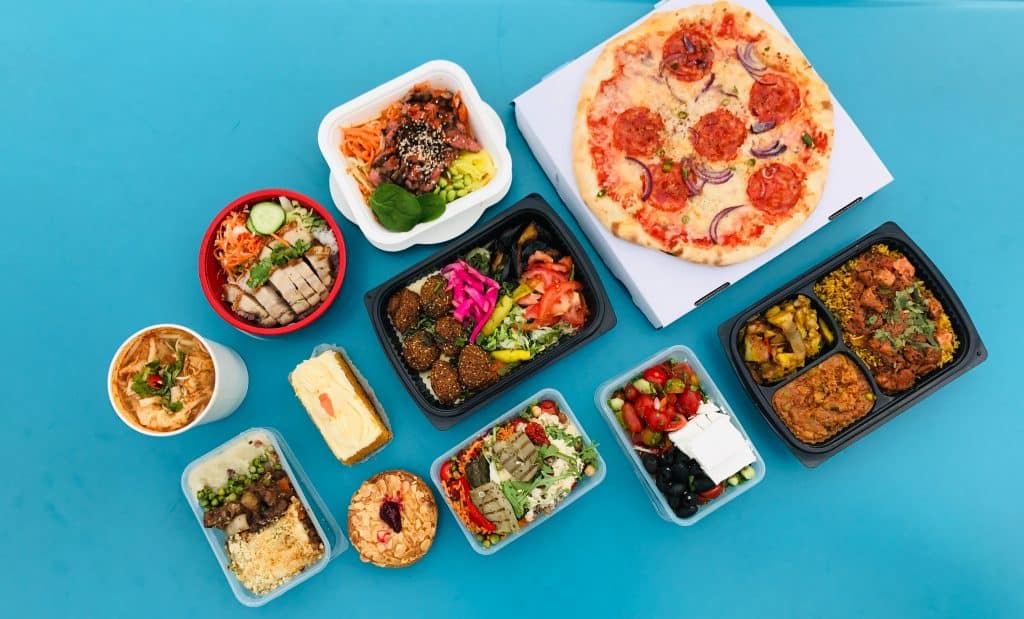
Considering catering to other markets
Our final suggestion in terms of product diversification is to consider catering to a different market: namely, a B2B audience.
Due to the limitations involved with sourcing only local, sustainable ingredients for their vegetarian meal kits, Benoo had to expand their reach in some other way, and supplying their meal kits for B2B cooking workshops was the way to do this.
“We hold workshops within the B2B space to help those companies who want to encourage their employees to change their habits,” says Bertrand de la Brassinne. “The idea is to change people’s minds [to eat more sustainably], so why wouldn’t we target everyone?”
Promote convenience through personalisation
Many of the brands we interviewed were keen to emphasise that they were not ‘hyper-convenience’ brands – meaning it is important to them that consumers still take the time to cook and reconnect with food, the planet, and themselves. The challenge is therefore increasing the convenience element of these meal-kit products while still retaining the central cooking element. One of the ways to do this and still satisfy the consumer need for convenience is to focus on personalisation.
For large companies like UK-based Gousto or American meal-kit brand Blue Apron, this sort of personalisation is managed by teams of computer and data scientists who are able to leverage the data of their thousands of customers, helping them to predict and model their behaviour to sell more products. HelloFresh even has a new personalisation tool called ‘HelloCustom’, which allows customers to swap out the protein or side options listed in certain recipes.9 For smaller brands, especially those who are limited in the number of recipe boxes they can feasibly offer, this is simply not possible.
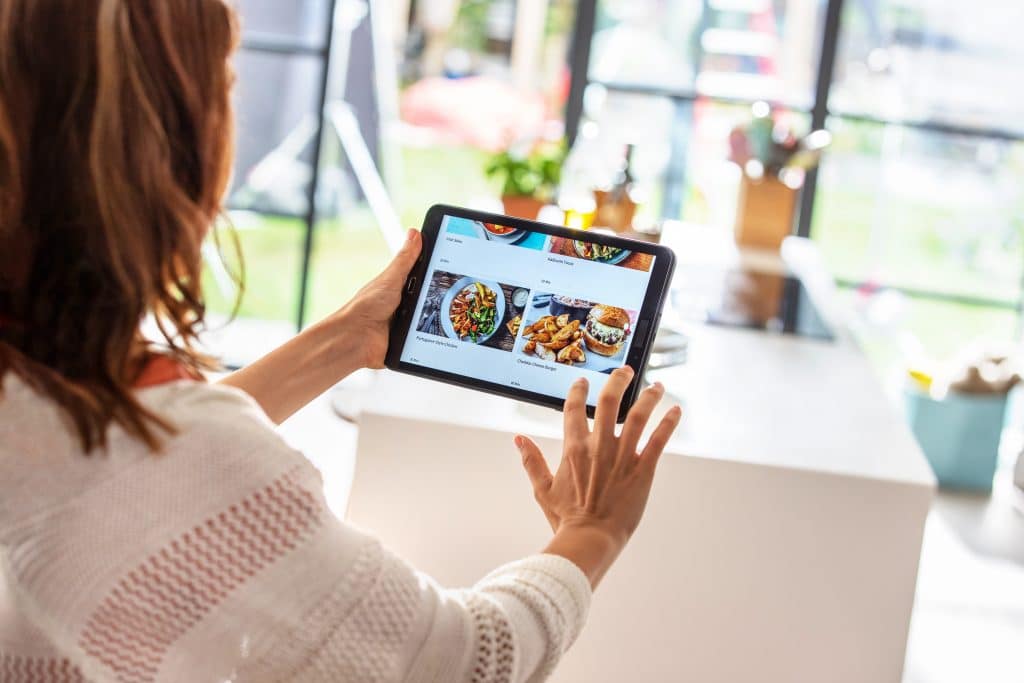
Large meal-kit companies can afford to provide consumers with highly customised options.
However, algorithmic personalisation aside, there are still other ways to make your products as relevant as possible to your target consumers. Keeping track of the data you do have is one key way, such as online ratings and reviews, direct feedback, and individual customer behaviour, such as which type of product they prefer or whenever they skip weeks. Developing your marketing and advertising strategy to target different groups of consumers based on this insight is also a central way to make your product as personalised and convenient as possible. After all, 45% of flexitarian consumers find that not being able to come across good plant-based options in supermarkets and restaurants is a key challenge – why not try to overcome this by bringing the products straight to them using targeted advertising?
We spoke to Will Moxham, Founder of plant-based, meal-box brand Planthood, who told us about his company’s use of website categorisation as a tool to help their customers find what they need. “Personalisation comes through choice, and we don’t yet have the capacity to do this,” he says. “Instead, we categorise our meals through three main meal types: detox, nourish, and feast. We offer something for everybody, and as we get bigger, we’ll be able to personalise more.”
At the end of the day, personalisation is all about making consumers’ lives easier. Thinking outside of the box to brainstorm all the best ways to connect with your consumers will help to attract more consumers, spreading the plant-based word and increasing your profits in the process.
Partner with other brands
Our fourth piece of advice is to consider collaborating with other brands to enrich your recipe-kit or meal-box offering. This could mean incorporating actual ingredients from another plant-based company, such as a branded-meat alternative, or it could mean combining marketing or production forces.
“Linking up with partner brands to incorporate add-ons into your meal kit offerings is a huge trend right now,” says Fisher from Grubby. “We’re seeing a lot of companies spicing up their recipes by adding branded ingredients on top of basic recipes.”
For example, in 2020, Gousto partnered with beloved UK brand Marmite to bring customers Marmite-inspired dishes.10 Similarly, in 2020, HelloFresh partnered with Italian restaurant Carluccio’s, most likely driven by the UK’s lockdown measures at the time.11 In a slightly different type of collaboration, Blue Apron announced a collaboration with electronics company Panasonic, developing recipes that can be cooked up using particular Panasonic kitchen appliances.12
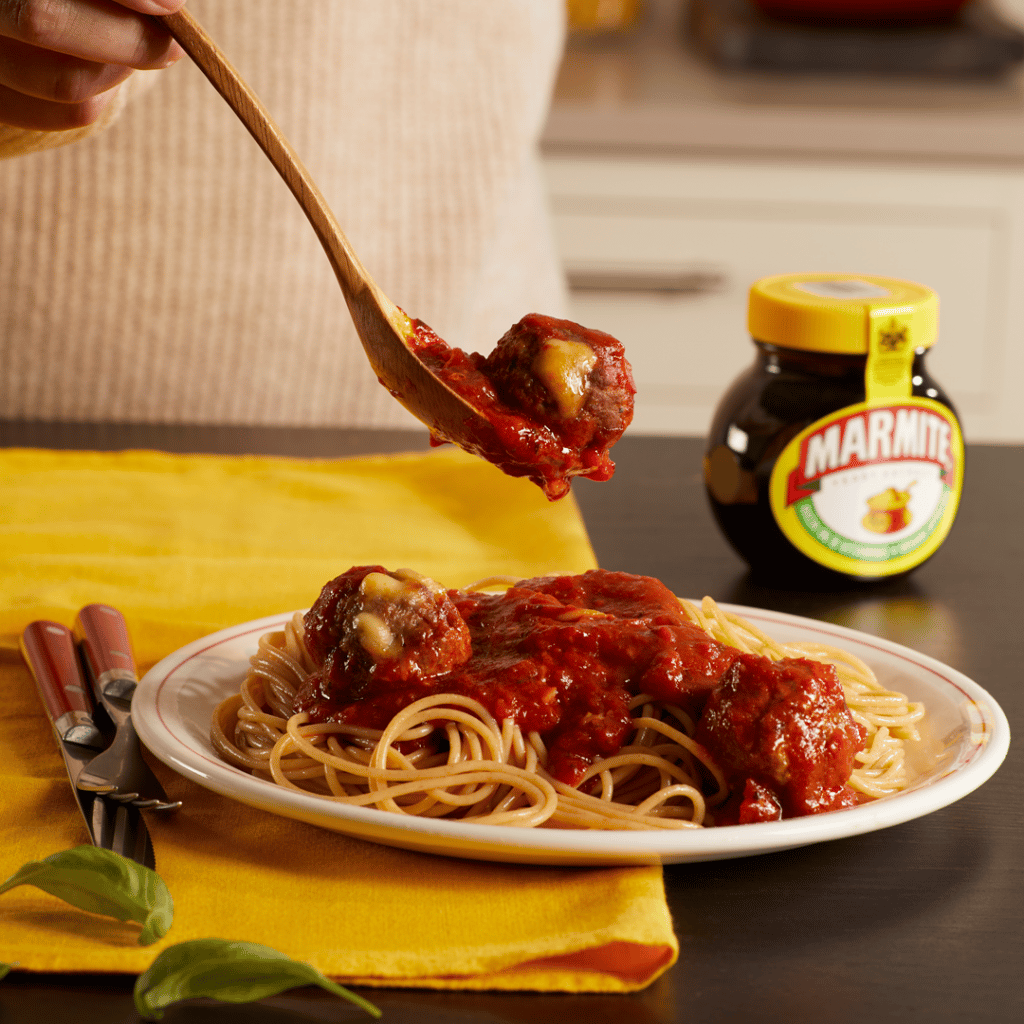
Partnering with well-known brands adds an extra layer of excitement for consumers, who either get to try something new or enjoy a well-known favourite. It also allows for the combining of two audiences – both yours, and your collaborators. Investigating how you can expand your range with partnerships such as these in mind can open the door to a whole host of new consumers and flavour opportunities.
Be transparent about your limitations
Consumers prefer brands that they feel share their values, are trustworthy, and have a social conscience. In fact, 80% of consumers surveyed by Harris Interactive and KuRunData believe that brands should be environmentally friendly and humanitarian.13 If your brand has core values such as sustainability and supporting local producers, these are most likely core reasons why a consumer would pick and stick with your brand.
However, staying true to your core ethical values as a brand almost always comes with a cost. This means both a literal cost to you and your consumer – for example, if your organically or locally sourced products are more expensive – and also a cost in terms of what you are tangibly able to offer them.
Leo highlights how Grubby’s central values include sustainability and supply-chain traceability. “We’re not just leaning into plant-based food and vegan cooking, but we’ve also got our commitment to life-cycle assessments (LCAs),” he says. “We can accurately compare each individual recipe to a meat alternative and tell our customers the carbon saving between these.”
Conducting such LCAs demonstrates Grubby’s commitment to the planet, but it can be time-consuming and costly, and means they can only offer meal kits which use their fully-traced, sustainable ingredients. Because of this, seasonality can also be a key issue. Locally sourced ingredients grown out of season can actually have a greater environmental impact than importing them from locations further afield, meaning further complications when it comes to calculating the meal kits’ greater environmental efficacy.14
Benoo struggles with a similar issue, with Bertrand de la Brassinne citing their dependence on the local weather in helping or hindering the growth of their produce. She suggests that the only way to overcome these sort of unavoidable issues is to be as honest as possible with your consumer. “Offer your customers full transparency about the product, and give them the right to choose,” she says. “You can’t do everything because it’s just too expensive, so you have to be honest with what you can do.”
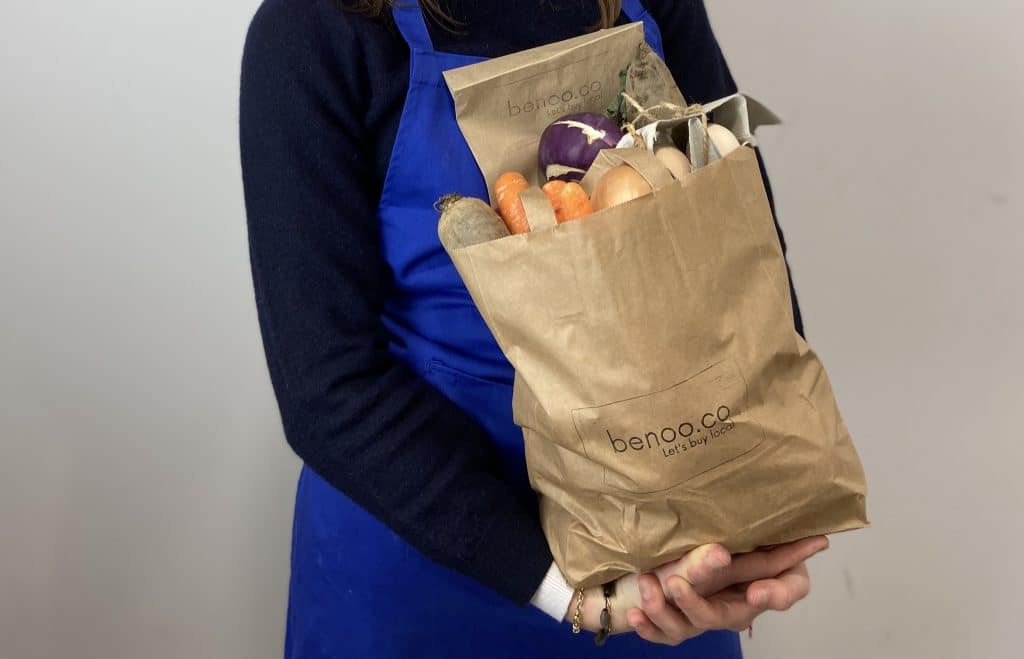
Promoting transparency and honesty with your consumers is key, says Benoo.
Another obvious limitation currently concerns the cost-of-living crisis. Keeping prices low during a time of rising costs and agricultural uncertainty due to the war in Ukraine can be a difficult, if near impossible, task. Once again, it is vital to do all you can to remain accessible to consumers looking to eat more plant-based. Try to harness the tips above to cut costs where you can, such as diversifying your product range or ingredients list.
If your company does have the scale and budget, it is worth investigating how you may be able to help out vulnerable people during this time. For example, Gousto has been trialling the efficacy of meal-kits in place of emergency food-bank parcels in the London borough of Hammersmith and Fulham.15 Similarly, chef Damian Wawrzyniak recently launched a UK-wide £5 ready-made, meal-box delivery scheme in order to combat the crisis.16 Helping the wider community and staying true to your company’s values will pay off in the long run.
Key takeaways
The economy is slowing down, but the plant-based movement isn’t. The underlying trends of plant-based are health and sustainability, and these will continue to grow.”
Expanding your company’s plant-based, meal-kit range can be a tricky business. At ProVeg, we believe that the following five actions can provide your business with key direction, helping you to both boost your profits and promote the plant-based cause as a whole:
- Target flexitarians with taste, health, and convenience.
- Consider diversifying your offerings.
- Promote convenience through personalisation.
- Partner with other brands.
- Be transparent about your limitations.
Convenience is at the heart of the recipe-kit and meal-box industry, so it is important to keep this in mind when implementing any of the above strategies. “You want to remove barriers and naturally slot into the customer’s day,” Weir from Pastan reminds us.
If you are interested in learning more about embedding convenience in the heart of your products, make sure to check out the recording of our webinar on the topic at ProVeg’s New Food Hub. If you’d like to work with us in developing your plant-based strategy, you can also email us at [email protected].
References
- Seifer, D. (2020): Meal Kits Have a New Purpose in Our New Reality. The NPD Group. Available at: https://www.npd.com/news/blog/2020/meal-kits-have-a-new-purpose-in-our-new-reality/ Accessed 2022-08-24.
- Grand View Research (2022): Meal Kit Delivery Services Market Size, Share & Trends Analysis Report by Offering (Heat & Eat, Cook & Eat), by Service (Single, Multiple), by Platform (Online, Offline), Meal Type (Vegan, Vegetarian, Non-Vegetarian), and Segment Forecasts, 2022-2030. Available at: https://www.researchandmarkets.com/reports/5318374/meal-kit-delivery-services-market-size-share-and Accessed 2022-07-26.
- Smart Protein Project (2021): What consumers want: A survey on European consumer attitudes towards plant-based foods. Country specific insights. European Union’s Horizon 2020 research and innovation programme (No 862957). Available at: https://smartproteinproject.eu/consumer-attitudes-plant-based-food-report/ Accessed 2022-08-28.
- Szejda, K and Parry, J (2020): Strategies to accelerate consumer adoption of plant-based meat. The Good Food Institute. Available at: https://gfi.org/images/uploads/2020/03/FINAL-Consumer-Adoption-Strategic-Recommendations-Report.pdf Accessed 2022-08-26.
- Coresight Research (2022): Infographic: US Meal-Kit Market—Post-Pandemic Normalization To Slow Growth. Available at: https://coresight.com/research/infographic-us-meal-kit-market-post-pandemic-normalization-to-slow-growth/ Accessed 2022-08-22.
- Mattinson, A. (2022): City snapshot: Huel sales pass £100m on surging global growth. Available at: https://www.thegrocer.co.uk/finance/city-snapshot-huel-sales-pass-100m-on-surging-global-growth/666062.article Accessed 2022-08-28.
- Vegconomist (2022): Plant-Based Meal Kit Brand The Flavourists Launches With Major UK Backing. Available at: https://vegconomist.com/products-launches/plant-based-meal-kit-brand-the-flavourists-launches-with-major-uk-backing/ Accessed 2022-07-26.
- Smart Protein Project (2021): What consumers want: A survey on European consumer attitudes towards plant-based foods. Country specific insights. European Union’s Horizon 2020 research and innovation programme (No 862957). Available at: https://smartproteinproject.eu/consumer-attitudes-plant-based-food-report/ Accessed 2022-08-28.
- Cannon, S. (2022): Customize your meal kit experience with HelloFresh. New York Post. Available at: https://nypost.com/2022/08/23/customize-your-meal-kit-experience-with-hellofresh/ Accessed 2022-08-29.
- Askew, K. (2020): Gousto teams up with Marmite for recipe innovation: ‘It felt right to partner with one of the UK’s most loved (and hated) food brands’. Food Navigator. Available at: https://www.foodnavigator.com/Article/2020/11/03/Gousto-teams-up-with-Marmite-for-recipe-innovation-It-felt-right-to-partner-with-one-of-the-UK-s-most-loved-and-hated-food-brands Accessed 2022-08-27.
- Jordan, H. (2020): Master Italian Cooking at Home With These Top Tips from Carluccio’s. HelloFresh Blog. Available at: https://blog.hellofresh.co.uk/master-italian-cooking-at-home-with-these-top-tips-from-carluccios/ Accessed 2022-08-29.
- Blue Apron (2022): Blue Apron Partners with Panasonic for Convenient Cooking Alternatives. Available at: https://investors.blueapron.com/press-releases/2022/01-25-2022-130106343 Accessed 2022-08-29.
- Harris Interactive / Toluna (2021): Brand Values Matter As Nearly 80% Of People Choose Brands Aligned To Their Personal Values – Research Reveals. Available at: https://harris-interactive.co.uk/press/brand-values-matter-as-nearly-80-of-people-choose-brands-aligned-to-their-personal-values-research-reveals/ Accessed 2022-08-29.
- Lee, B., Hepburn, J., & Bellmann, C. (2019): Delivering Sustainable Food and Land Use Systems: The Role of International Trade. Chatham House. Available at: https://accelerator.chathamhouse.org/article/delivering-sustainable-food-and-land-use-systems-the-role-of-international-trade Accessed 2022-08-29.
- Nott, G. (2022): Gousto trials meal kits in place of emergency food bank parcels. The Grocer. Available at: https://www.thegrocer.co.uk/community/gousto-trials-meal-kits-in-place-of-emergency-food-bank-parcels/670335.article Accessed 2022-08-24.
- Seo, J. (2022): Chef launches £5 ready-made meal service amid cost of living crisis. The Caterer. Available at: https://www.thecaterer.com/news/chef-launches-5-pound-ready-made-meal-service-amid-cost-of-living-crisis Accessed 2022-07-27.

